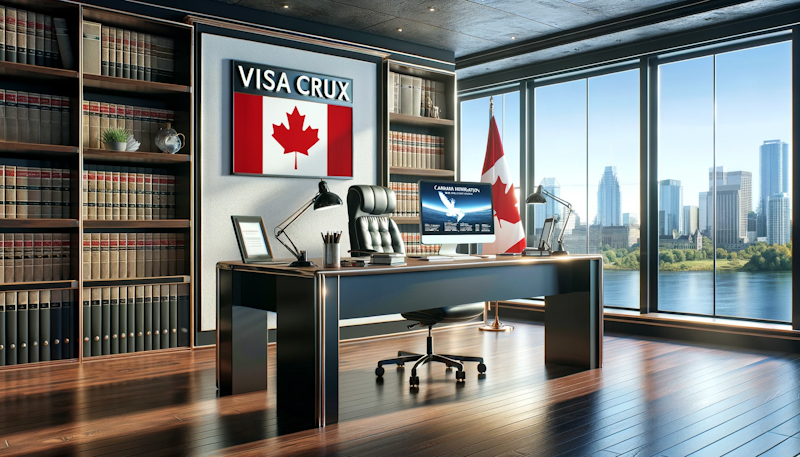What to Do After Getting PR in Canada - Navigating Life
Your Quick 30-Second Answer to What to Do After Getting PR in Canada!
Upon obtaining Permanent Residency (PR) in Canada, it's crucial to provide a Canadian mailing address for your PR card, live in Canada for at least 730 days within a five-year period, and maintain records of travels for future applications. Understand the specific requirements of your immigration program, particularly if you're part of a Provincial Nominee Program. Always keep your PR card valid and renew it before expiry, as it's essential for re-entry into Canada. Consider applying for Canadian citizenship once eligible, as it offers more security than PR status. Annual tax filing is important for maintaining status and eligibility for future renewals or citizenship applications, and legal compliance is crucial since PRs can face deportation for criminal convictions in Canada.
For an in-depth overview, please see the "Table of Contents" below.
Initial Steps: What to Do After Getting PR in Canada
Welcome to your guide on what to do after getting PR in Canada, where we explore essential steps to smoothly transition into your new life as a Canadian permanent resident.
TABLE OF CONTENT
Introduction and Overview
1. Why use this Guide?
2. Confirming Your PR Status
3. Key Aspects of PR
Getting Settled
4. Setting Up the Essentials
5. Housing and Transportation
6. Building Credit History
Life in Canada
7. Employment and Education
8. Building Your New Life
Final Steps
9. Wrapping Up the Journey
10. Embracing New Journey
Additional Information
11. Common Questions FAQs
12. Additional Resources
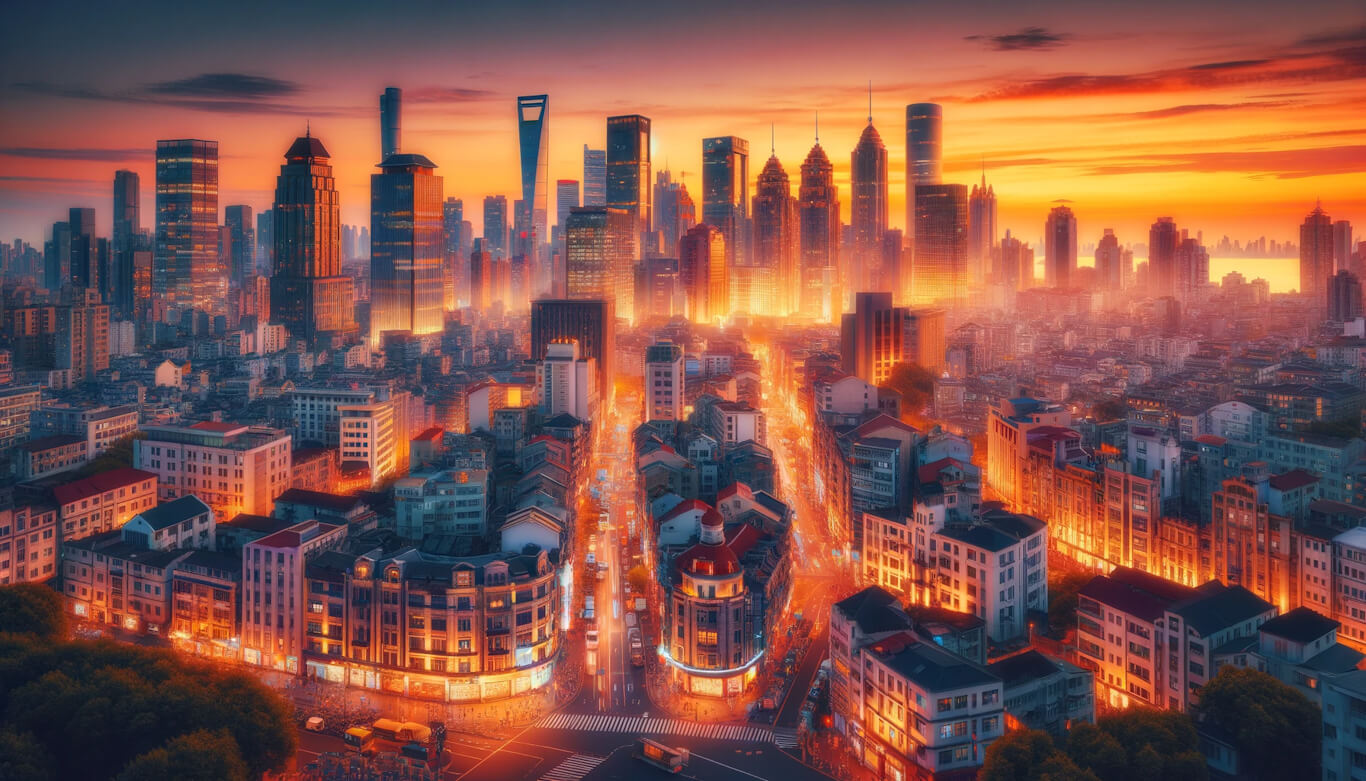
1. Who should use this Guide and Why?
Whether you're a skilled worker on work permit, a former international student, or a family member joining relatives in Canada, this guide offers comprehensive insights and practical tips to help you integrate into Canadian society effectively. Embarking on a new chapter in life is always a mix of excitement and challenge, and this is particularly true when you've achieved the milestone of becoming a new permanent resident in Canada. Understanding what to do after getting PR in Canada is crucial for a smooth transition into your new life. This comprehensive guide is designed to navigate you through the essential steps and provide practical advice for settling into Canada as a permanent resident.
Canada, known for its vibrant multiculturalism and stunning landscapes, welcomes new permanent residents with open arms. However, the initial excitement of receiving your Canadian Permanent Residence (PR) can often be accompanied by a sense of uncertainty about the next steps. This guide aims to alleviate those concerns, walking you through the crucial early stages of your Canadian journey.
After obtaining Permanent Residency (PR) in Canada in 2024, there are several important steps and considerations:
- 1. Canadian Mailing Address: Provide a Canadian address to receive your first PR card, as it cannot be mailed outside Canada.
- 2. Residency Requirement: Live in Canada for at least 730 days within any five-year period. This time need not be consecutive, but keeping a record of your travels is crucial for future renewals or citizenship applications.
- 3. Understanding Program Requirements: Be aware of the specific requirements of your immigration program, such as financial thresholds or the need to reside in a particular province if nominated by a Provincial Nominee Program.
- 4. Maintain Valid PR Card: Renew your PR card before it expires, as it's needed for traveling back to Canada. The renewal process can take up to six months.
- 5. Apply for Canadian Citizenship: Consider applying for citizenship once eligible, as PR status can be lost in certain situations, while citizenship offers more stability and rights.
- 6. File Canadian Taxes: Annual tax filing is essential for maintaining your status and is a key component of future applications for citizenship or PR card renewal.
- 7. Legal Compliance: Avoid legal trouble, as PRs can be deported for criminal convictions within Canada.
In summary, obtaining PR in Canada is just the beginning. Maintaining your status, planning for potential citizenship, and understanding your rights and responsibilities are all essential parts of your journey as a new permanent resident.
2. Confirming Your Status - Understanding PR Status

Understanding PR Status
The first thing to grasp as a new permanent resident is what Canadian Permanent Residence actually means. Holding PR status in Canada is a significant step towards full citizenship. It allows you the freedom to live, work, and study anywhere in Canada. However, it comes with responsibilities and rights that are important to understand.
A key document for any new permanent resident is the Confirmation of Permanent Residence (COPR). This document is not just a piece of paper; it's your official proof of status in Canada. It's essential to ensure all the details on your COPR are correct, as they'll be used for your Permanent Resident Card (PR Card) application.
Getting Your PR Card
Your PR Card is your official identification in Canada and a necessary document for international travel as a permanent resident. Applying for your PR Card should be one of your first actions after landing. The process involves submitting an application to Immigration, Refugees and Citizenship Canada (IRCC) and typically includes providing photos and other required documents. The timeframe for receiving your PR Card can vary, but it’s a vital part of establishing your legal status in Canada.
After getting PR in Canada, obtaining a Permanent Resident (PR) card in Ontario involves the following steps:
Note: As a new permanent resident in Canada, you will automatically receive your first Permanent Resident (PR) card by mail upon arrival, without needing to apply for it. This is a standard part of the immigration process. However, if you fail to provide the required mailing address and photo within 180 days of immigrating, you must apply for your first PR card. Additionally, if you became a permanent resident before June 28, 2002, and never applied for a PR card, you can use this specific application to apply for your first PR card.
1. Application: Apply for a PR card. You can do this as part of your initial PR application process.
2. Documentation: Provide required documents, including your Confirmation of Permanent Residence, to prove your PR status.
3. Renewal: If you already have a PR card that has expired or will expire within the next 9 months, renew it before you travel.
4. Urgent Requests: In case of urgency, check if you qualify for expedited processing.
5. Outside Canada: If you're outside Canada without a valid PR card, apply for a permanent resident travel document to return.
For more detailed and up-to-date information about what to do after getting PR in Canada, refer to Canada's official immigration website or contact the relevant authorities. This process is an important aspect of settling in Canada after receiving your PR status.
3. Additional Insights - Navigating Key Aspects of Canadian Residency
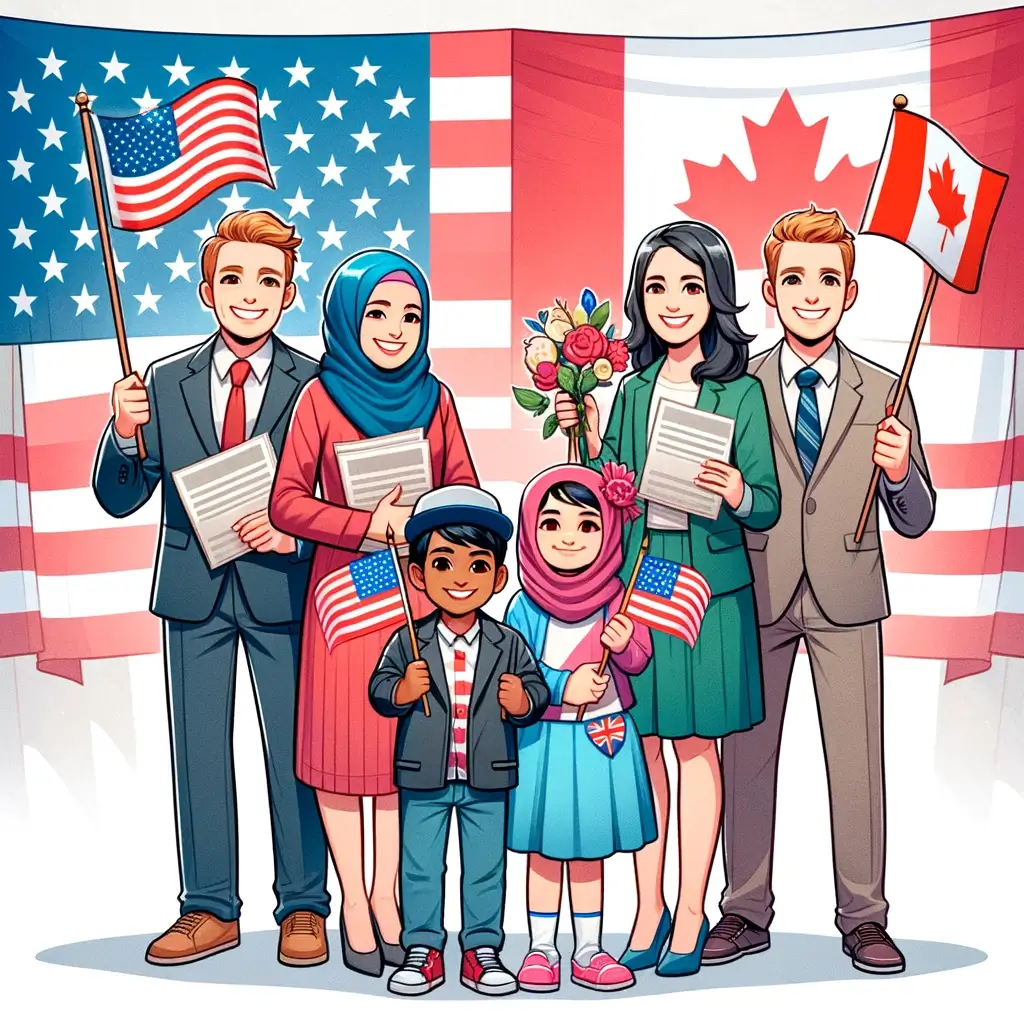
As you continue to familiarize yourself with life in Canada, there are a few more aspects worth highlighting, ensuring you make the most of your new permanent resident status.
The Importance of Understanding Government Processes
Understanding the role and services of the Government of Canada is crucial. As a Canadian permanent resident, you will interact with various government departments for services like healthcare, taxation, and immigration. Familiarize yourself with their procedures to make your interactions smoother.
Preparing for Canadian Citizenship
If you're considering applying for Canadian citizenship, be prepared for the written test. This test assesses your knowledge of Canadian history, values, institutions, and symbols. Preparing for this test is a crucial step in your journey from holding a Canada PR visa to becoming a Canadian citizen.
Employment Opportunities and Job Offers
If you're thinking about what to do after getting PR in Canada, researching the job market and updating your resume should be high on your list. Canada's job market is ripe with opportunities for skilled workers. If you're seeking employment, keep an eye out for job offers that suit your skills and experience. Remember, receiving a job offer from a Canadian employer can also positively impact your immigration processes, such as in the Express Entry system.
Age Considerations in Immigration
Your age can be a factor in certain immigration processes. For instance, the Comprehensive Ranking System (CRS) in the Express Entry system awards points based on age, with younger candidates often receiving more points. However, Canada values the contributions of individuals of all years of age, ensuring diverse perspectives in the workforce.
Confirmation of Permanent Residency and Its Significance
Holding a document for Confirmation of Permanent Residency is a testament to your new status in Canada. This document is crucial for various administrative processes and serves as proof of your right to live and work in Canada.
Crossing the Land Border
For those living near or planning to travel to the United States, understanding the protocols at the land border is important. As a permanent resident, you'll need your PR card or a Permanent Resident Travel Document to re-enter Canada at a land border.
Incorporating these additional insights, this text aims to provide a comprehensive understanding of the key steps and considerations for new permanent residents in Canada. From your initial Canada PR visa application to crossing land borders and preparing for the citizenship test, each aspect of your journey is important. We hope this information helps you navigate your new life in Canada with confidence and excitement. Once again, welcome to your new home, and we wish you all the best in this exciting new chapter of your life!
4. Setting Up The Essentials - First things First
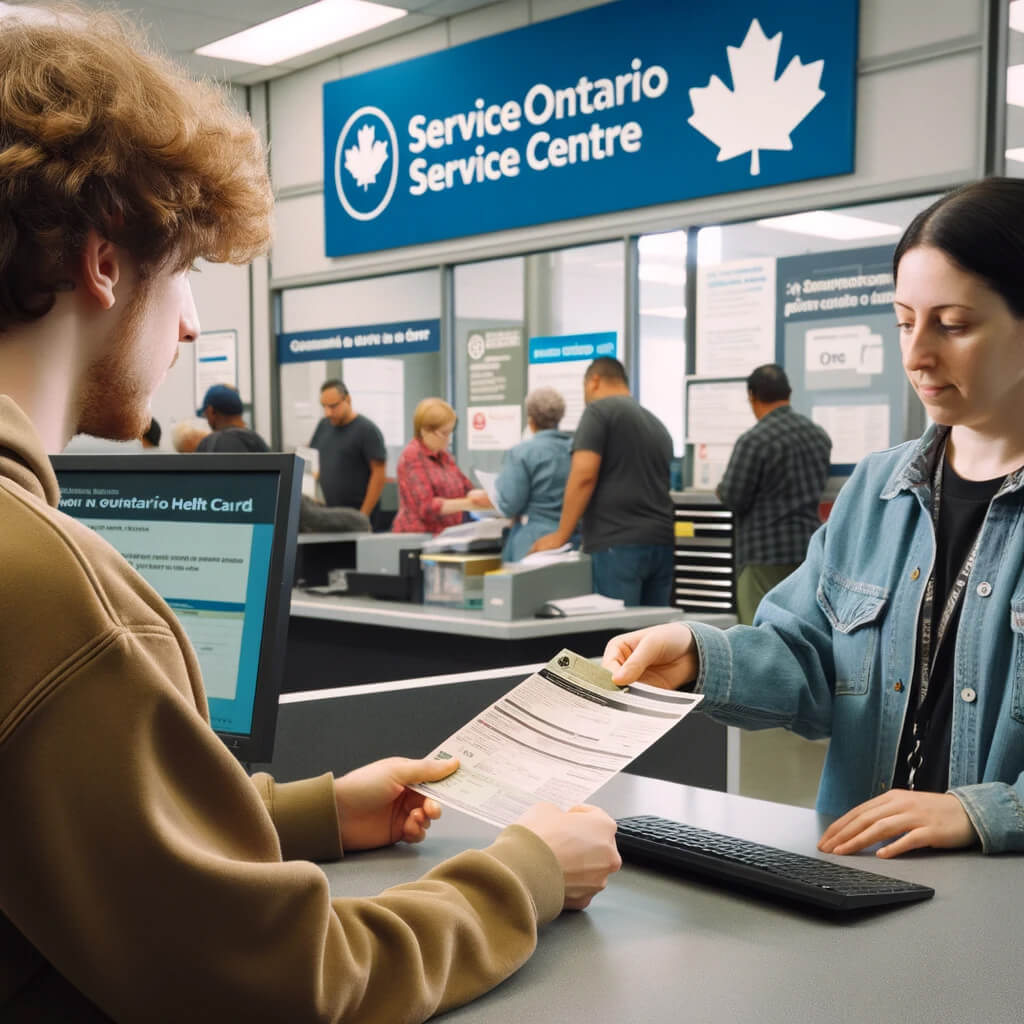
Social Insurance Number (SIN)
A Social Insurance Number is a must-have for every permanent resident. It's not just a number; it's your key to accessing government services and working in Canada. You can apply for your SIN at a Service Canada office shortly after arriving. Remember, your SIN is confidential and should be protected. To apply for a Social Insurance Number (SIN) in Ontario after getting PR, follow these steps:
1. Choose Application Method: Apply online, by mail, or in person at a Service Canada Centre.
2. Primary Identity Document: Provide one of the following:
- Birth certificate from the province or territory of birth.
- Certificate of Canadian Citizenship.
- Confirmation of Permanent Residence (COPR) issued by IRCC.
3. Secondary Document: Provide a secondary document containing your legal name and date of birth, like a passport or a Canadian driver’s license.
4. Complete SIN Application Form: Fill out and sign the SIN application form.
Applying for a SIN is an important step in what to do after getting PR in Canada, as it is required for working and accessing government services. For detailed and current information, visit the official website of Service Canada or contact them directly.
Opening a Bank Account
Navigating the Canadian banking system is another critical step. Opening a bank account is essential for managing your finances in Canada. Most banks require identification documents like your passport and COPR for account setup. Canadian banks often offer specific services for new immigrants, which can be beneficial in the early stages of your financial setup in Canada. Opening a bank account in Ontario after getting PR is a crucial step in what to do after getting PR in Canada. Here's a concise guide:
1. Physical Appearance: Visit a bank in person, as most banks require your physical presence to open an account.
2. Valid Identification: Ensure you have valid, original identification. Banks do not accept photocopies.
3. Identification Options: You have three options:
- Present two forms of ID from a specified list.
- Present one ID from the list and another from a different set.
- Present one ID from the list and have an existing customer of the bank vouch for you.
4. Contact the Bank: Before visiting, contact the bank for specific requirements and to confirm the process.
Remember to carry the necessary documents to meet the identification requirements as outlined by the bank. For up-to-date and detailed information, it's recommended to visit the official websites of the banks in Ontario or contact them directly.
Acquiring a Health Card
Access to healthcare is one of the significant benefits of Canadian residency. To tap into Canada’s healthcare system, you’ll need to register for a health card in your province or territory. This process can vary depending on where you settle, but having a health card is crucial for accessing free or subsidized medical services. After getting PR in Canada, follow these steps to obtain a health card in Ontario:
- 1. Get Application Form: Obtain the "Registration for Ontario Health Insurance Coverage Form" online or from a local Service Ontario office.
- 2. Complete the Form: Fill out the application accurately.
- 3. Collect Necessary Documents: Prepare three separate, original identification documents.
- 4. Visit Service Ontario: Submit the form and documents in person at a Service Ontario Centre.
- 5. Apply for OHIP: Complete the OHIP application process at the Service Ontario Centre.
For the latest details, consult official websites or Service Ontario directly. This is an essential step in what to do after getting PR in Canada, ensuring access to health services.
In the next part, we will continue exploring the essential steps for settling in Canada, focusing on housing, transportation, employment, and education. This guide is crafted to help you navigate the complexities of starting a new life in Canada, ensuring you feel prepared and informed every step of the way. Stay tuned as we delve deeper into what to do after getting PR in Canada, ensuring your transition is as smooth and successful as possible.
5. Housing and Transportation - Establishing Your Foundation
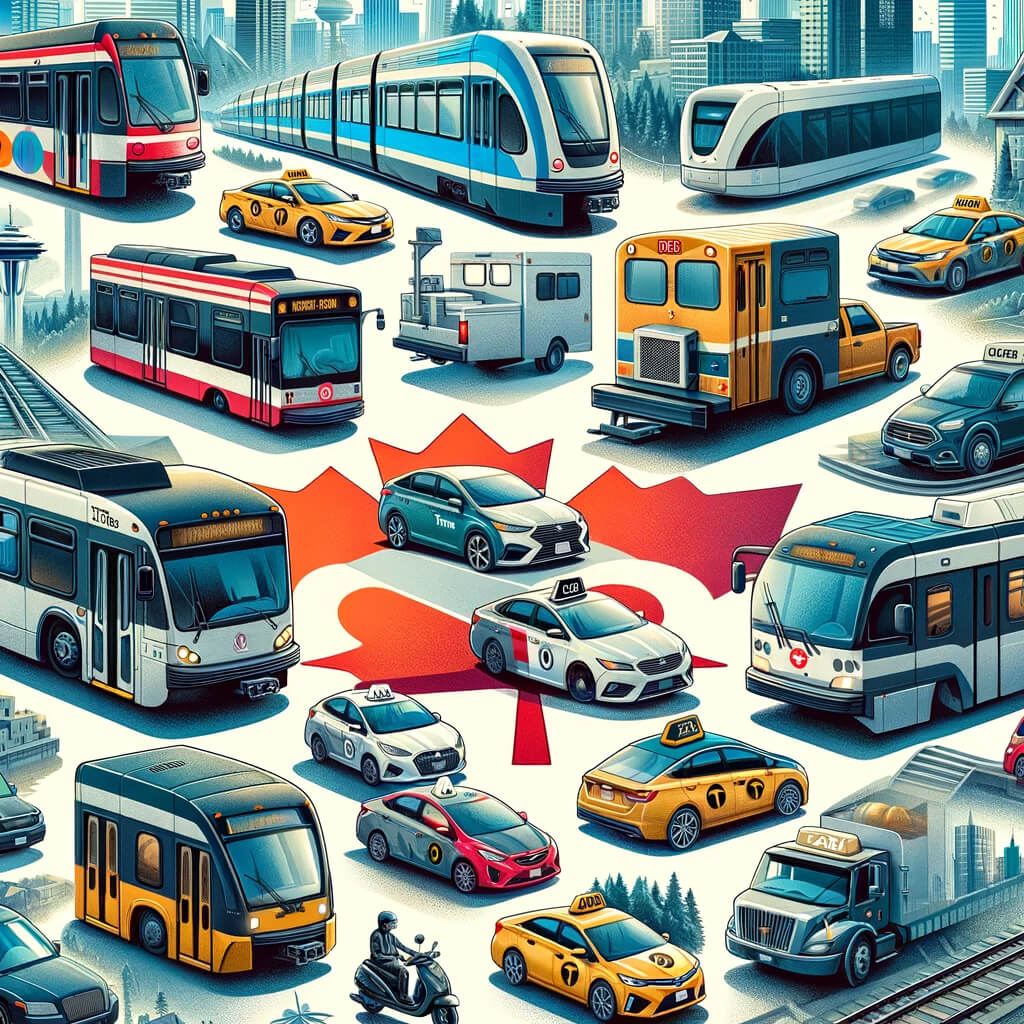
Finding a Place to Live
One of the most critical steps in what to do after getting PR in Canada is securing your living situation. Whether you’re looking to rent or buy, understanding Canadian housing is vital. Canada offers a variety of housing options, from urban apartments to suburban homes. Researching the real estate market in your chosen Canadian province or city is crucial. Consider factors like proximity to work, schools, and amenities. Utilizing online resources and connecting with real estate agents can aid in finding a place that feels like home.
Finding a place to live in Ontario after getting Permanent Residency (PR) involves several steps:
1. Temporary Accommodation: Initially, find temporary housing such as a hotel or hostel, where you can assess prices, locations, and services online.
2. Explore Housing Types: Consider various housing options like detached houses, townhouses, condominiums, rental apartments, or rooms in shared houses.
3. Utilize Resources: Use the Canada Mortgage and Housing Corporation (CMHC) website for comprehensive information on buying a house or renting an apartment in Canada.
4. Research and Compare: Investigate different neighborhoods, compare costs, and consider proximity to work, schools, and amenities.
5. Legalities and Documentation: Understand rental agreements or purchasing processes and prepare necessary documents like proof of income and identification.
This process is a key part of what to do after getting PR in Canada, ensuring you find a suitable and comfortable living situation. For more detailed guidance and current information, it's advisable to consult local real estate listings and Canadian housing resources.
Transport and Connectivity
Transportation is another key aspect of settling in Canada. Many Canadian cities boast efficient public transportation systems. Obtaining a transit card will simplify your daily commute, giving you access to buses, trains, and subways. If you prefer driving, you may need to acquire a Canadian driver’s license. Additionally, setting up a Canadian SIM card and phone plan is essential for staying connected in your new country.
Navigating transport and connectivity in Ontario after receiving Permanent Residency in Canada involves understanding various transportation options:
1. Public Transportation: Most Canadian cities and towns offer accessible public transit systems, including buses, trains, subways, light-rail trains, and streetcars. It's advisable to research these options before deciding on a residence location.
2. Tickets and Passes: For public transit, purchase tickets or transit passes. Transit passes usually offer unlimited service use for a designated period and are more cost-effective than buying multiple tickets.
3. Domestic Travel Modes: Newcomers can travel domestically via air, rail, bus, ferry, or car. Major cities have regular flights, while the rail network connects the country. Buses are often the most affordable inter-city travel option, and ferries are common in coastal regions.
4. Taxis and Ride-Sharing: Canada has an extensive taxi network focused on specific regions or cities. Additionally, ride-sharing services like Uber and Lyft are widely available, especially in larger cities.
These options are part of the transportation landscape that newcomers need to familiarize themselves with, as part of what to do after getting PR in Canada. For specific details, consult local transportation websites or service providers.
6. Solidifying Your Future in Canada - Building Credit History
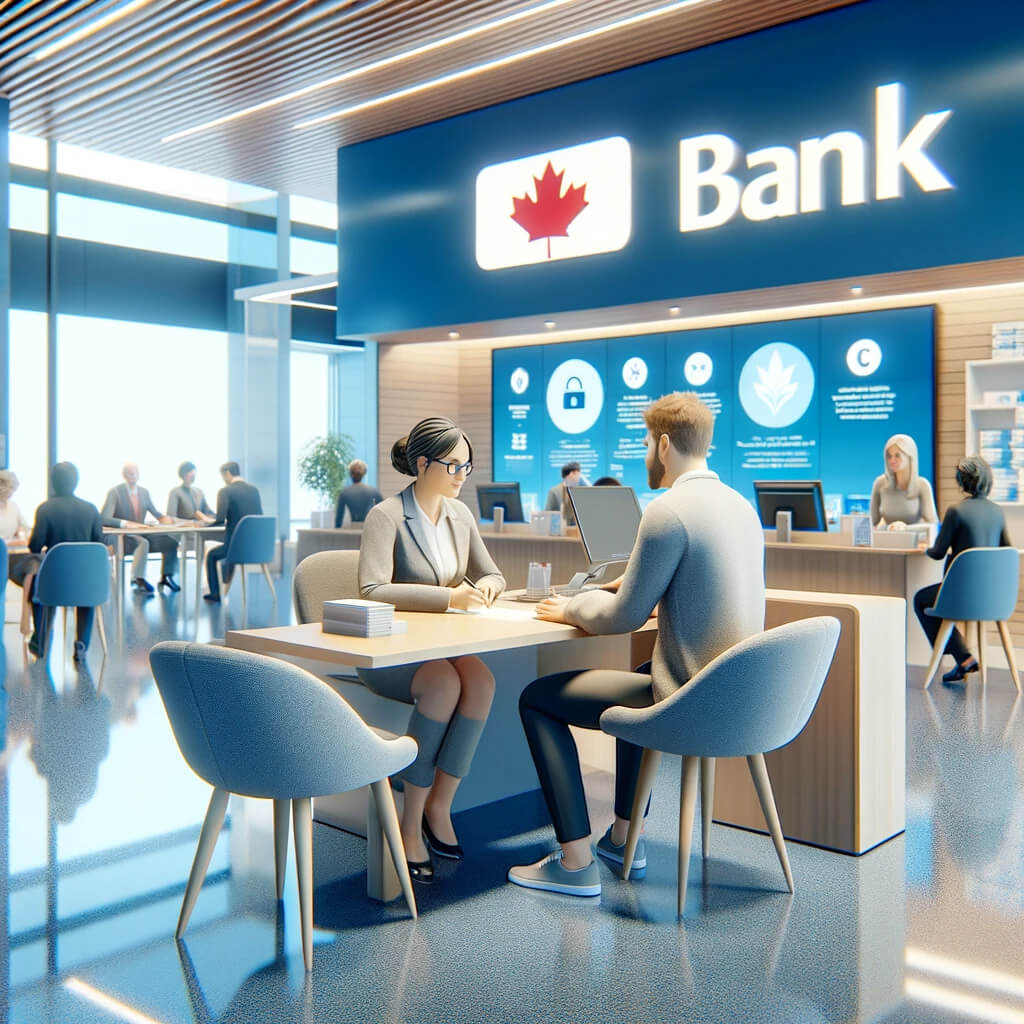
Pathway to Canadian Citizenship
One of the most significant long-term goals for many new PRs is obtaining Canadian citizenship. Understanding the residency requirements is the first step in this journey. As a Canadian permanent resident, you are required to meet certain conditions, including physical presence in Canada for a specified period. Preparing for citizenship involves more than just meeting these requirements; it’s about integrating into Canadian society and understanding Canadian values and traditions.
Planning for the Future - Building Credit History
Planning for your future in Canada involves several key aspects. Building a good credit history is essential for long-term financial stability. Starting with a Canadian credit card and managing your finances responsibly can help establish a solid credit score. This is important for future endeavors like buying a house or applying for loans.
Planning for the future as a new permanent resident (PR) in Canada includes building a strong credit history, which is vital for financial stability. Here's what you should do:
1. Open a Bank Account: Start by opening a bank account in Canada to establish a financial presence.
2. Secure a Credit Card: Apply for a secured credit card or a credit card designed for newcomers. Use it responsibly and pay your bills on time to build credit.
3. Pay Bills Promptly: Ensure you pay all bills, including rent, utilities, and loans, on time. Consistent on-time payments reflect positively on your credit history.
4. Monitor Your Credit Score: Regularly check your credit score and report. Many websites offer free credit monitoring services in Canada.
5. Manage Debts Wisely: Keep your debts manageable and avoid carrying high balances on credit cards. High credit utilization can negatively impact your credit score.
6. Apply for Credit Responsibly: Apply for credit only when necessary. Multiple credit inquiries in a short period can affect your credit score.
7. Consider a Loan: Consider taking out a small loan or a car loan, which can help diversify your credit profile if managed properly.
Building a positive credit history is essential for your financial future in Canada, as it can impact your ability to secure loans, mortgages, and other financial opportunities. One crucial aspect of what to do after getting PR in Canada is to learn about your tax obligations and how to file tax returns.
7. Employment and Education - Advancing Your Career in Canada
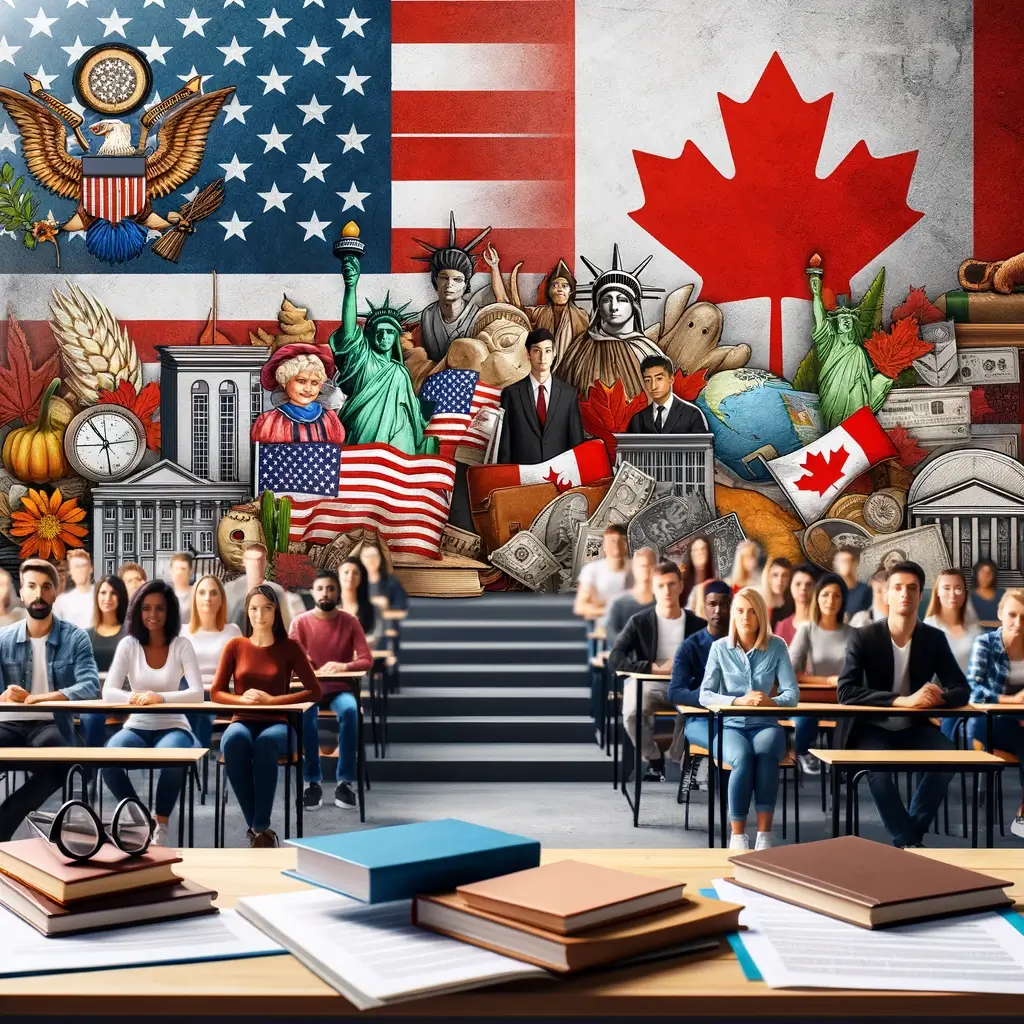
Job Hunting in Canada
Finding employment is often a top priority for new permanent residents. The Canadian job market can be competitive, so understanding how to tailor your resume for Canadian employers is crucial. Highlight your work experience and skills relevant to the Canadian context. Job search platforms, networking events, and Canadian job fairs can be valuable resources. Remember, gaining Canadian work experience can be a significant advantage in your career development.
If you're thinking about what to do after getting PR in Canada, researching the job market and updating your resume should be high on your list. Job hunting in Ontario for new permanent residents involves several key steps:
1. Start Early: Begin your job search before arriving in Canada using websites like Workopolis.
2. Utilize Job Boards: Use popular job boards like Indeed, Job Bank Canada, and social media sites like LinkedIn and Facebook.
3. Improve Your Resume: Ensure your resume fits Canadian styles and is free from errors.
4. Highlight Relevant Experience: Emphasize relevant experience, even if it's from outside Canada, as industries like customer service and technology have universally applicable skills.
5. Network: Attend job fairs, professional events, and connect with people professionally.
6. Use Multiple Job Search Tools: Sign up for various job databases to increase your chances of finding a suitable job.
7. Seek Professional Help: Consider enlisting the help of a professional job services agency for resume writing and job search strategies.
This approach is part of what to do after getting PR in Canada, focusing on effectively navigating the job market. For detailed guidance, consult Canadian job hunting resources and professional employment services.
Continuing Education
Canada values education highly, offering numerous opportunities for further studies. As a new permanent resident, you may consider enhancing your education or upgrading your skills. Recognizing international qualifications and pursuing additional Canadian certifications can open up new career paths. Language skills are also essential in Canada; improving your English or French can greatly benefit your professional and personal life.
Continuing education for new permanent residents in Ontario involves various steps and options:
1. College Applications: Immigrant applicants can apply to all programs in Ontario's colleges, similar to Canadian-born applicants. Proof of landing and academic history documents may be required.
2. Recognition of Prior Learning: If you have prior training related to your area of study, you might not need to start a program from the beginning. Contact colleges directly for eligibility in recognition of prior learning.
3. Specialized Programs: Ontario colleges offer programs and services for immigrant students, including academic and language upgrading, and professional training for employment and licensure in Canada.
4. Bridging Programs: These programs help bridge the gap between prior training/experience and Canadian workplace requirements. They are available for both regulated and non-regulated occupations through colleges, universities, and community agencies.
Exploring these options is an integral part of what to do after getting PR in Canada for career advancement or changing fields. For detailed information and application procedures, it's advisable to contact the specific educational institutions directly.
8. Building Your New Life - Integrating into Canadian Society
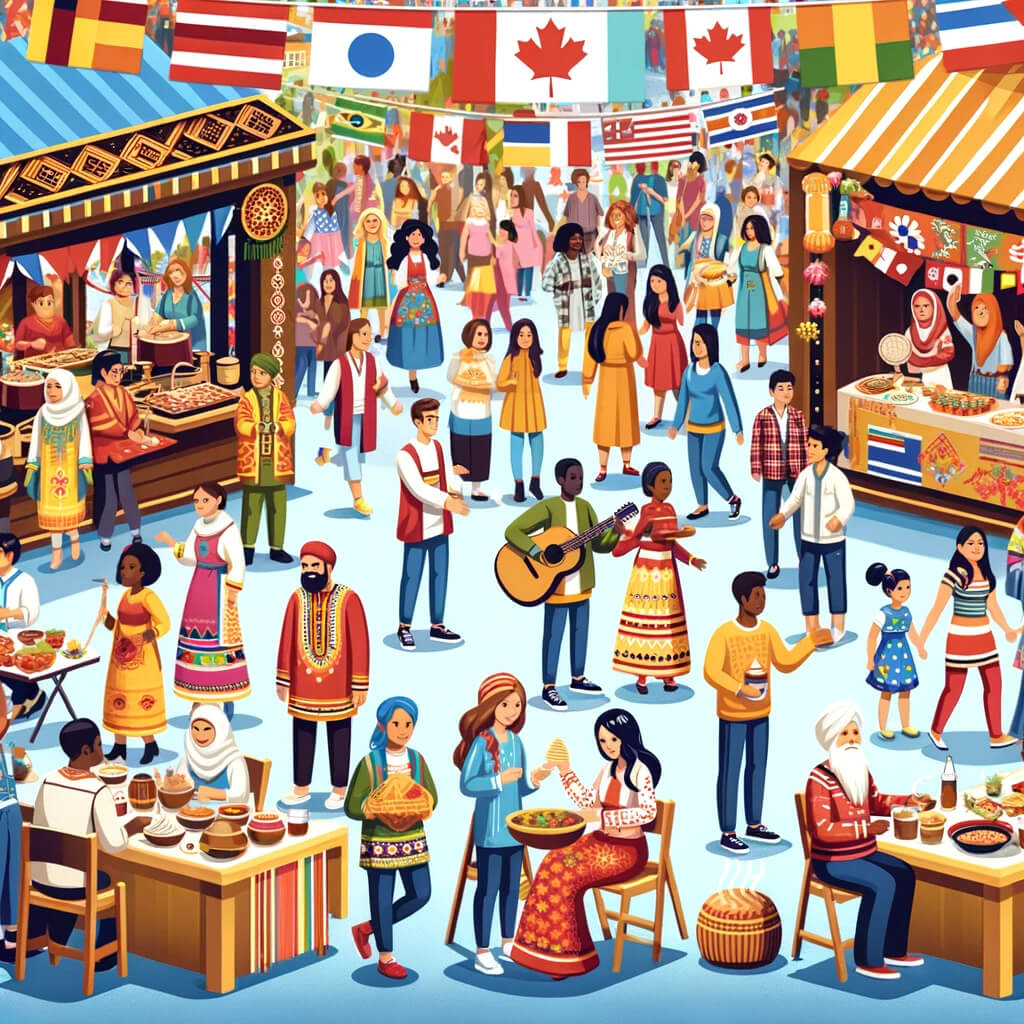
Integrating into the Community
Adjusting to life in Canada involves more than just fulfilling the legal requirements of PR status. Engaging with your local community is vital for feeling at home in your new environment. Community centers, local groups, and social events are great places to start building connections. Canada’s diversity means you’ll meet people from all walks of life, making your integration into Canadian society a rich and rewarding experience.
Integrating into the Canadian community after obtaining Permanent Residency is essential. Here are some key steps:
1. Explore Your Community: Actively explore and get involved in your new community to meet people and feel at home.
2. Utilize Settlement Services: Settlement service providers offer programs, training, and activities to help you adjust to your new life in Canada.
3. Engage in Local Activities: Participate in activities and services at community centers, recreation centers, and libraries, including classes, storytelling, and learning circles.
4. Join Sports Leagues: Participate in local sports leagues and activities for all ages and skill levels.
5. Connect with Places of Worship: Engage with places of worship for support, social services, and to meet people sharing your culture and language.
6. Neighborhood Involvement: Introduce yourself at neighborhood events, local parks, and community gardens. Join social media groups in your area.
7. School Involvement: Get involved with your child's school community through meetings and activities.
8. Volunteer: Volunteer your time to meet people, contribute to the community, and gain Canadian work experience.
These steps will help in building connections and integrating into the Canadian way of life, an important aspect of what to do after getting PR in Canada.
Understanding Canadian Culture
Adapting to Canadian culture is an exciting part of your journey. Embracing the values of inclusivity and respect that are central to Canadian society will enrich your experience. Familiarizing yourself with Canadian customs, holidays, and cultural nuances will help you understand the social fabric of your new home. Language skills play a crucial role here; participating in language classes can enhance your ability to connect with others and navigate daily life in Canada.
Understanding Canadian culture is essential for newcomers to integrate successfully into Canadian society as new permanent residents. Here are key aspects to consider:
1. Multicultural Society: Canada is known for its multiculturalism. Embrace and respect the diversity of cultures, languages, and backgrounds you will encounter.
2. Cultural Festivals: Attend cultural festivals and events to learn about different communities and their traditions. Canada hosts a wide range of festivals throughout the year.
3. Outdoor Activities: Participate in outdoor activities like hiking, skiing, or camping, which are popular among Canadians. It's a great way to enjoy the country's natural beauty and bond with locals.
4. Hockey Culture: Hockey is a big part of Canadian culture. Watching or playing the sport can help you connect with Canadians, especially during the NHL season.
5. Cultural Etiquette: Familiarize yourself with Canadian social norms, including politeness, punctuality, and respecting personal space.
6. Canadian Food: Try Canadian dishes like poutine, butter tarts, and Nanaimo bars to experience the country's culinary culture.
7. Indigenous Heritage: Learn about the Indigenous peoples of Canada, their history, and contributions to the country. Respect Indigenous cultures and traditions.
Understanding Canadian culture is a crucial part of what to do after getting PR in Canada, as it helps you connect with the local community and adapt to your new home.
In the next section, we will explore the long-term considerations for new permanent residents, including the pathway to Canadian citizenship and planning for your future in this welcoming country. Understanding what to do after getting PR in Canada is a continuous process of learning and adapting, and we’re here to guide you through each step of this exciting journey. Stay tuned for more insights and practical advice to make the most of your new life in Canada.
9. Wrapping Up Your Initial Journey in Canada
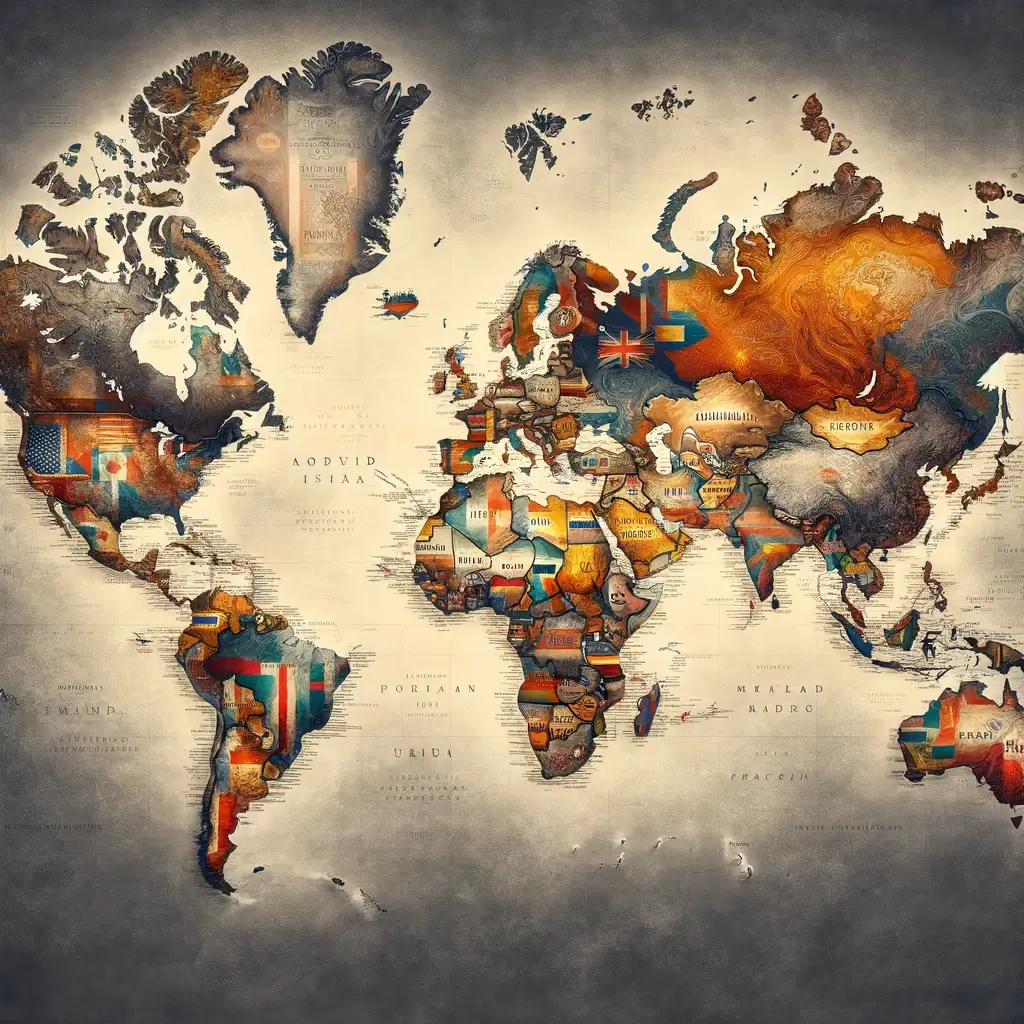
Having covered the essentials of settling in, let’s recap the most important things for new permanent residents in Canada. Your journey begins with confirming your permanent resident status, including the importance of your COPR and applying for your PR card. Setting up essentials like a Social Insurance Number, a bank account, and a health card is critical.
Finding a place to live, whether through online resources or connecting with real estate agents can aid in finding a place that feels like home. Whether you came through the provincial nominee program or other avenues, it is a significant first step. For those looking for a soft landing, connecting with settlement agencies can provide valuable support.
For international students and skilled workers, Canada offers diverse opportunities. The Express Entry program and the Federal Skilled Worker Program are pathways that many choose to embark on. And if you’re bringing dependent family members, understanding the process, from the application form to the residency obligation, is crucial.
Navigating the Canadian immigration system, perhaps with the help of an immigration lawyer, is a part of this process. This includes understanding the CRS score, the comprehensive ranking system used in the Express Entry system, and ensuring you meet the minimum score requirements. To become a new Canadian permanent resident, understanding the various immigration programs, including the Express Entry system and the Canadian Experience Class, is beneficial.
Healthcare is another crucial aspect, with most new PRs eligible for free medical coverage. What to do after getting PR in Canada includes exploring healthcare options and registering for a provincial health card to ensure medical coverage. However, it’s a good idea to look into private insurance options as well, especially for the foreseeable future while you settle in.
For those looking to work, securing a job, even as a Canadian permanent resident, might be necessary depending on your situation. The Canadian job market is welcoming to foreign nationals, but standing out often requires demonstrating language proficiency and a strong understanding of the Canadian work culture. To make the most of what to do after getting PR in Canada, consider exploring language classes if English or French is not your first language.
As you make your permanent move to Canada, remember that this is just the first step. There are many resources available to help you, from non-profit organizations to Canadian government services. Whether it’s getting a library card for public resources or consulting with an immigration officer for your PR travel document, every step you take solidifies your new life in Canada.
This page has aimed to provide a thorough understanding of what to do after getting PR in Canada. From the initial steps of confirming your permanent resident status to planning for your long-term future, we've covered the essential aspects of starting a new life in this beautiful country. We hope this guide has been helpful and wish you the best on your Canadian journey. Remember, Canada is a land of opportunities, and as a new permanent resident, you're well-placed to make the most of these. Welcome to Canada, and here's to a bright and prosperous future!
10. Embracing Your New Journey in Canada

As we conclude this comprehensive guide on what to do after getting PR in Canada, let’s take a moment to recap the essential steps and reaffirm the exciting journey ahead for new permanent residents. From understanding the significance of your Confirmation of Permanent Residence (COPR) to the practicalities of settling in, each step is a milestone in your Canadian journey.
The process starts with your PR application, where you transition from your home country to Canada. Upon your arrival, the landing process marks your first time stepping into a new life. You'll receive vital documents, including your Canadian PR visa and, subsequently, your Canada PR card, which are essential for your residency and travel. Don't forget to apply for your Permanent Resident Travel Document if you plan to travel outside Canada before receiving your PR card.
Setting up a Canadian address and acquainting yourself with public transport will help you navigate your new environment. Health care is a critical aspect of your settlement, so be sure to understand the health benefits available to you and your dependent children, and register for a health card as soon as possible.
Your next step might involve seeking employment or continuing education. Canada’s Federal Skilled Trades Program, among other immigration programs, opens doors to numerous job opportunities. Prepare your resume, look out for job offers that match your skills, and don’t hesitate to contact Canadian employers directly. For families, enrolling dependent children in school is a key step, so understanding the Canadian education system, from high school to higher education, is important.
Remember, the processing time for various applications can vary, so it’s essential to plan accordingly. Keep your documents, like proof of funds and other required papers, up to date to ensure smooth processing. For those involved in business immigration, understanding the nuances of Canadian business practices and regulations is crucial.
Health care in Canada is a significant benefit for permanent residents. Familiarize yourself with the health system and register for your health card. Having a family doctor is essential for ongoing health needs. Additionally, be aware of the COPR validity and ensure that your documents are always current.
If you have questions or need assistance, there are numerous settlement services available. These organizations can provide guidance on everything from finding housing to understanding your rights and responsibilities as a new permanent resident. Immigration officials at the Canadian visa office are also a valuable resource for any queries related to your status and to find help with what to do after getting PR in Canada.
11. Common Questions (FAQs) about What to do after PR
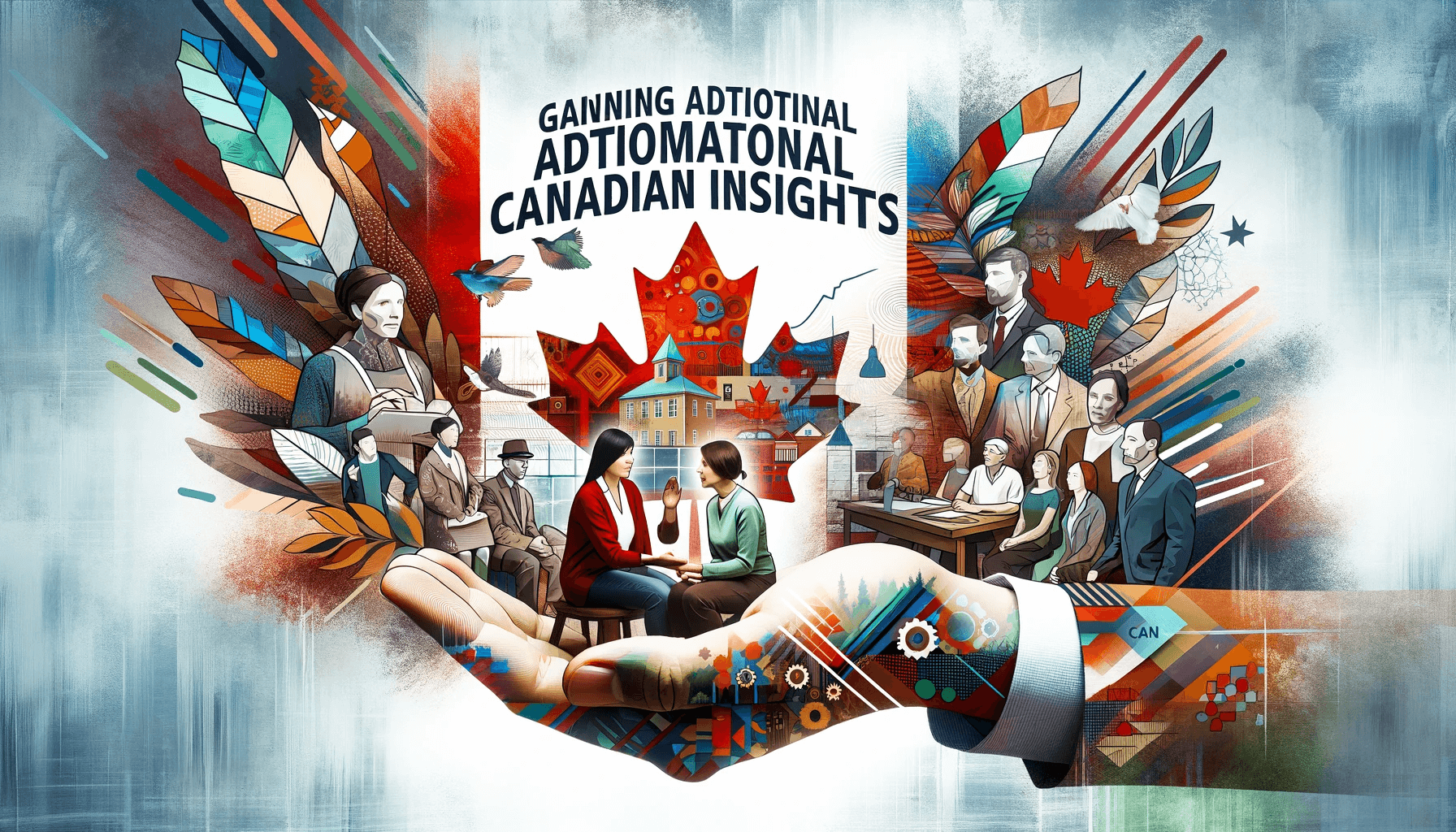
What should I do immediately after receiving my Permanent Residency (PR) in Canada?
What should I do immediately after receiving my Permanent Residency (PR) in Canada?
Upon receiving PR, you should apply for an Ontario Health Card, open a bank account, and start looking for suitable housing.
How can I obtain a health card in Ontario after becoming a PR?
How can I obtain a health card in Ontario after becoming a PR?
To get a health card, complete the application form, gather the required documents, and submit them in person at a ServiceOntario Centre.
What's the process for opening a bank account in Ontario as a new PR?
What's the process for opening a bank account in Ontario as a new PR?
Visit a bank in person, provide valid identification, and understand the specific requirements of the bank.
How do I apply for a Social Insurance Number (SIN) in Ontario as a PR?
How do I apply for a Social Insurance Number (SIN) in Ontario as a PR?
Choose your application method for SIN, prepare the required documents, and complete the SIN application form.
What are the steps to obtain a PR card in Ontario?
What are the steps to obtain a PR card in Ontario?
Apply for a PR card as part of your initial PR application, provide necessary documents, and renew if required.
How can I find a place to live in Ontario after getting PR status?
How can I find a place to live in Ontario after getting PR status?
Start with temporary accommodation, then explore different housing types, research neighborhoods, and understand the processes for renting or buying.
What transportation options are available for new PRs in Ontario?
What transportation options are available for new PRs in Ontario?
Utilize public transportation, purchase tickets or passes, and explore domestic travel modes, taxis, and ride-sharing services.
What are the tips for job hunting in Ontario after becoming a PR?
What are the tips for job hunting in Ontario after becoming a PR?
Improve your resume, use multiple job search tools, highlight relevant experience, network, and consider using professional job services.
How can I integrate into the Canadian community as a new PR?
How can I integrate into the Canadian community as a new PR?
Connect with locals, participate in community activities, learn official languages, use government services, and embrace the multiculturalism of Canada.
What do I need to know about Canadian culture as a new PR?
What do I need to know about Canadian culture as a new PR?
Understand Canada's multicultural society, attend cultural festivals, engage in outdoor activities, appreciate hockey culture, and respect cultural etiquette.
These FAQs provide further clarity on various aspects of 'What to do after getting PR in Canada'. Always refer to official guidelines and consult with immigration experts for the most accurate and up-to-date information tailored to your specific situation.
12. Where to Find Additional Resources
To further assist you in your journey, here is a list of helpful websites and organizations for new PRs:
- Immigration, Refugees and Citizenship Canada (IRCC): For official information on PR status and citizenship.
- Service Canada: For Social Insurance Numbers and other government services.
We invite you, the readers, to share your experiences and questions about settling in Canada. Your stories can inspire and guide others on a similar path. Engage with us through comments or on social media – let’s create a supportive community where we can all learn and grow together.
Remember, moving to a new country is a significant life event, but with the right information and support, it can be a smooth and rewarding experience. Embrace this new chapter in your life with openness and enthusiasm. Canada is a land of diverse opportunities, and as a new permanent resident, you are well-positioned to make the most of what this country has to offer. If you are still wondering, what to do after getting PR in Canada, refer to additional sources provided above.

Kamal Akhtar is a Canadian immigration lawyer licensed by the Law Society of Ontario. Based in Ontario, Canada. Kamal has years of experience helping foreign nationals with immigration applications and appeals. He specializes in Canadian immigration law and other complex entry solutions. Kamal dedicates himself to delivering honest, strategic, and client-centered legal solutions for every case.
Kamal's credentials include a Bachelor of Law (LL.B.) and a Master of Law (LL.M.) from Osgoode Hall Law School in Toronto. Kamal is a noted member of professional associations like the Canadian Immigration Lawyers Association (CILA), the Canadian Association of Professional Immigration Consultants (CAPIC), the Canadian Bar Association (CBA), and the Ontario Bar Association (OBA). Over 20 years of legal experience shape Kamal's insights.
Please note that the information provided on this website does not constitute legal or professional advice.
Phone: +1 (289) 216-4666 | Fax: +1 (289) 778-4745 | Email: info@kamallaw.ca

